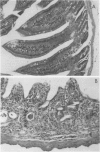Abstract
The ability of clinical isolates of Candida albicans and candida tropicalis to invade through normal and damaged gastrointestinal mucosa was determined. Adult mice were treated with either gentamicin or gentamicin and cytarabine. Suspensions of yeast cells (10(7)) were administered through a catheter intraesophageally. Invasion was determined by culturing liver, kidney, and lung tissue from mice sacrificed after 48 h. C. albicans and C. tropicalis were incapable of invading through normal gastrointestinal mucosa in mice treated only with gentamicin. Two isolates of C. tropicalis penetrated the damaged gastrointestinal mucosa in 69% (49 of 71) of mice treated with gentamicin and cytarabine. In contrast, three isolates of C. albicans penetrated he damaged gastrointestinal mucosa in only 23% (14 of 62) of mice. These results suggest that C. tropicalis is more capable of invading through damaged gastrointestinal mucosa than C. albicans. The observations in this mouse model parallel those seen in patients on cytotoxic drugs. Therefore, this model offers a tool for investigation of the pathogenicity of these organisms in a model analogous to the compromised host.
Full text
PDF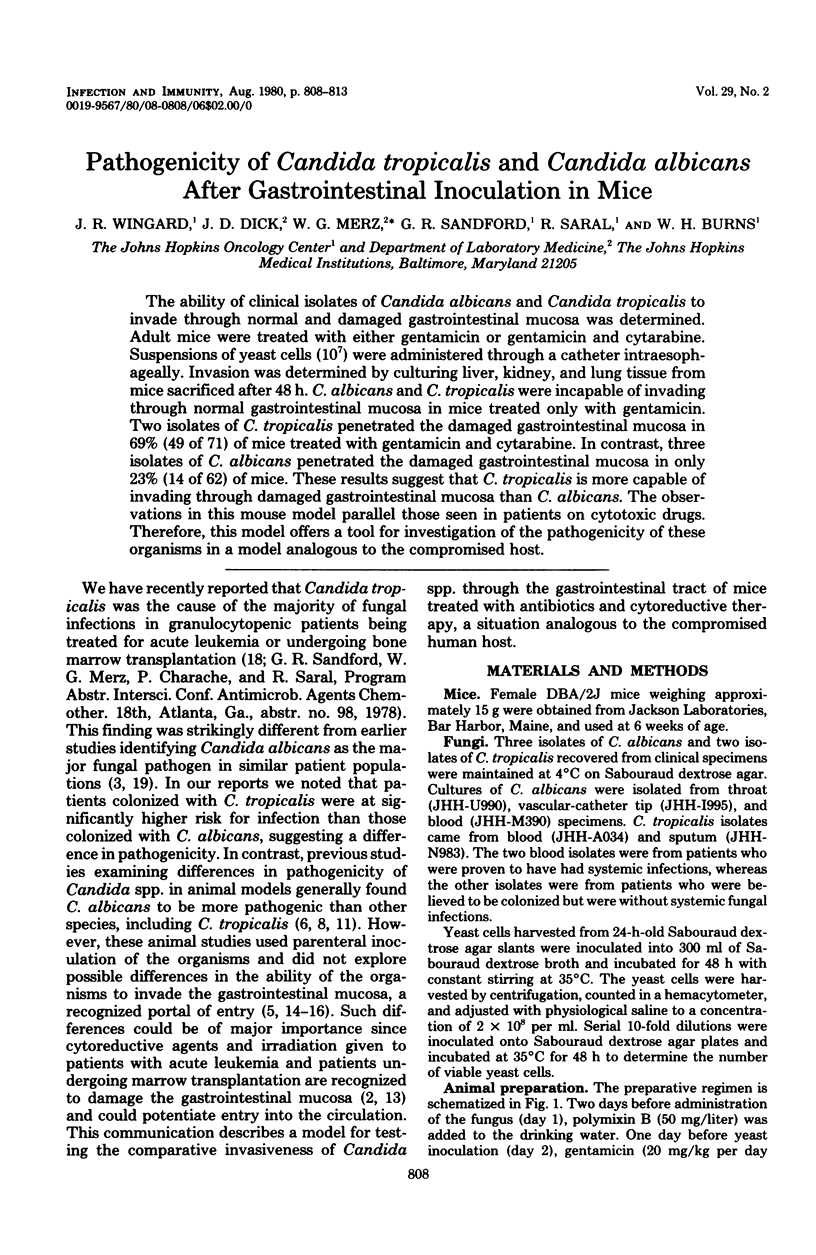
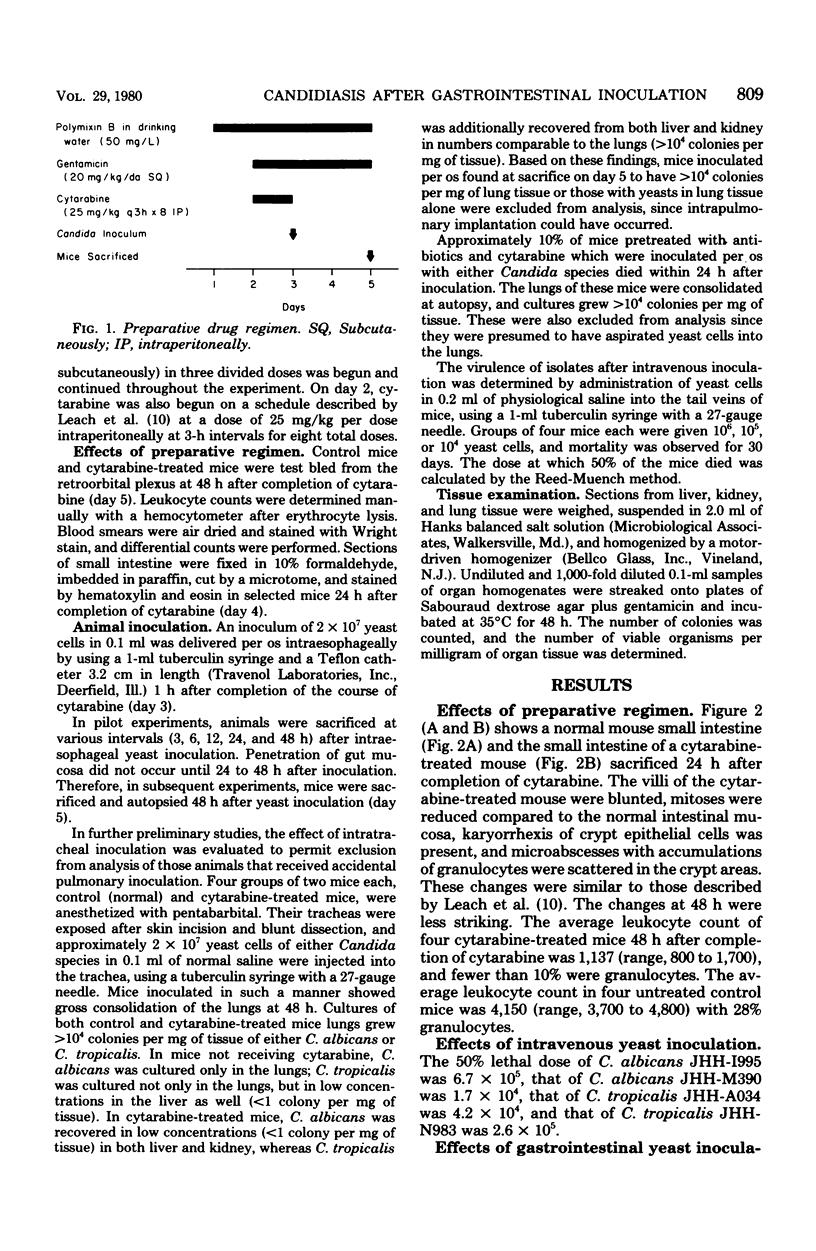
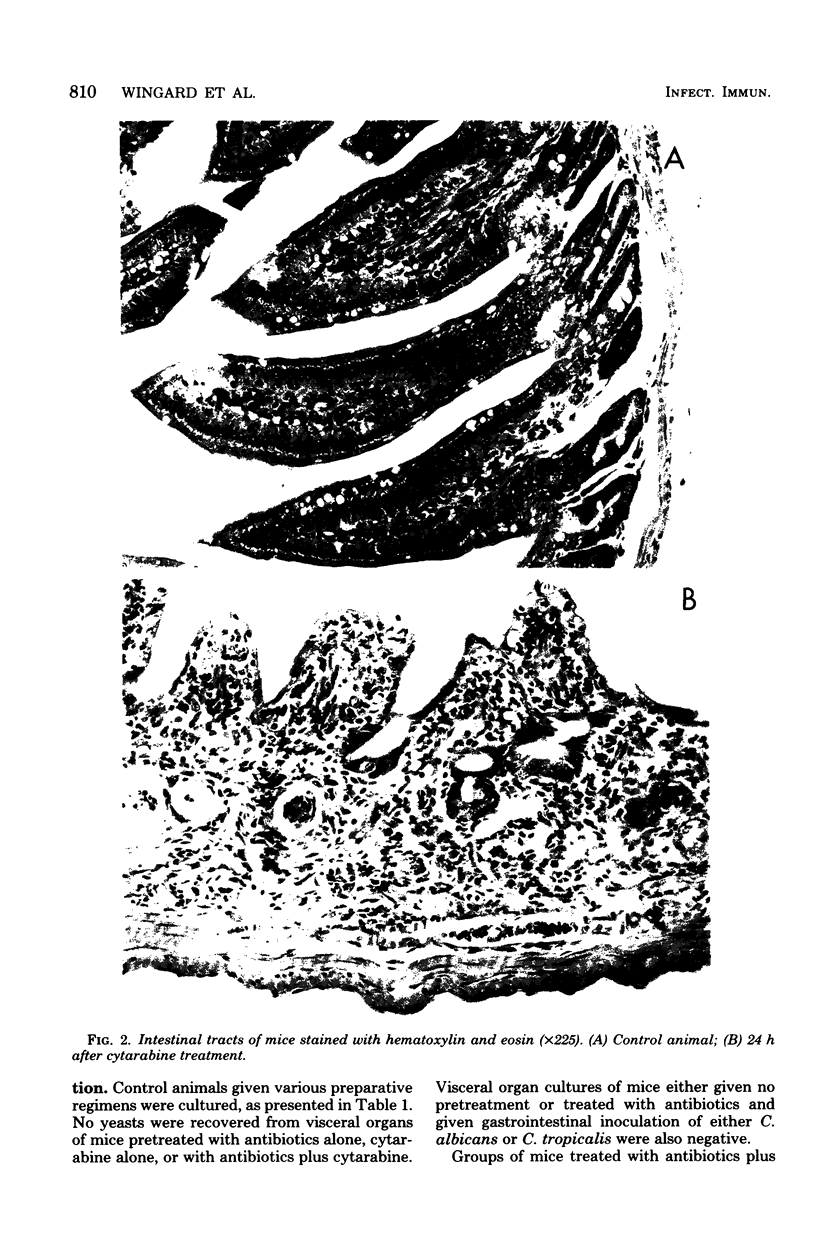
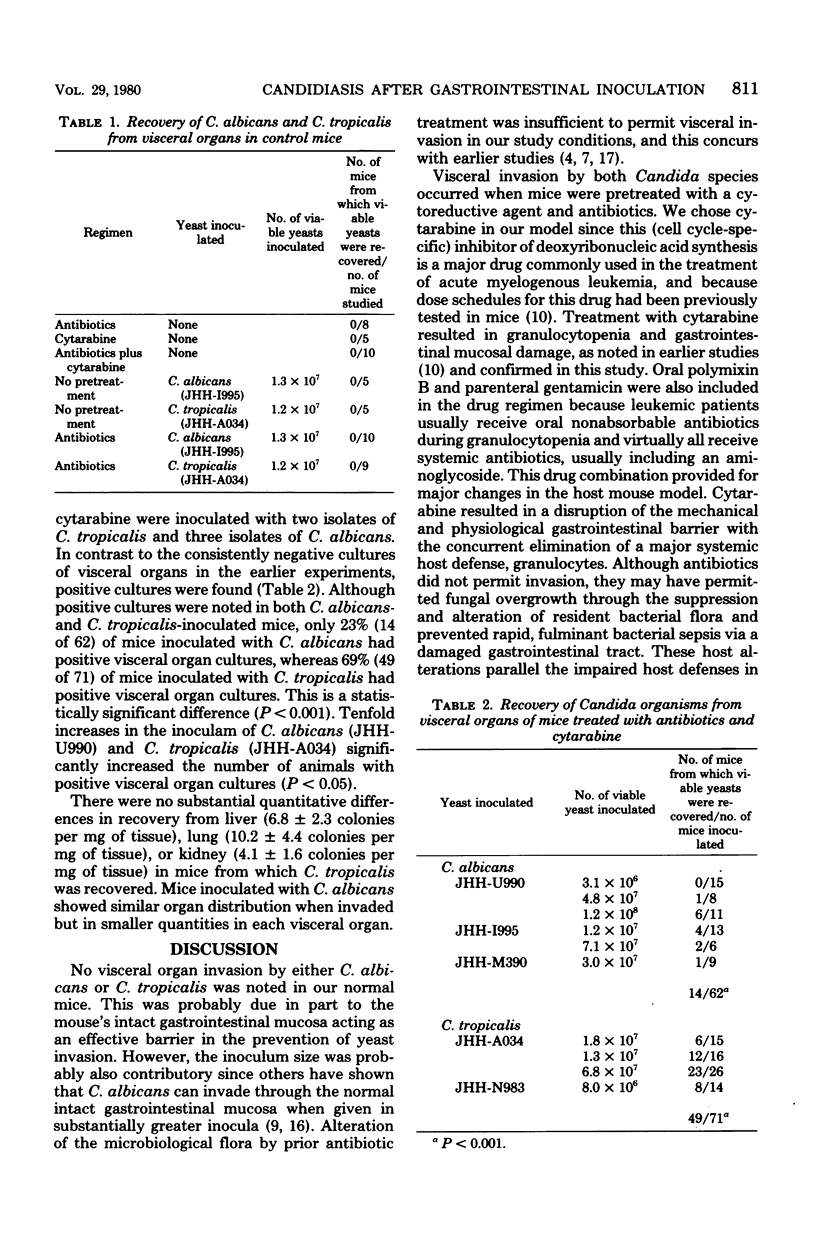
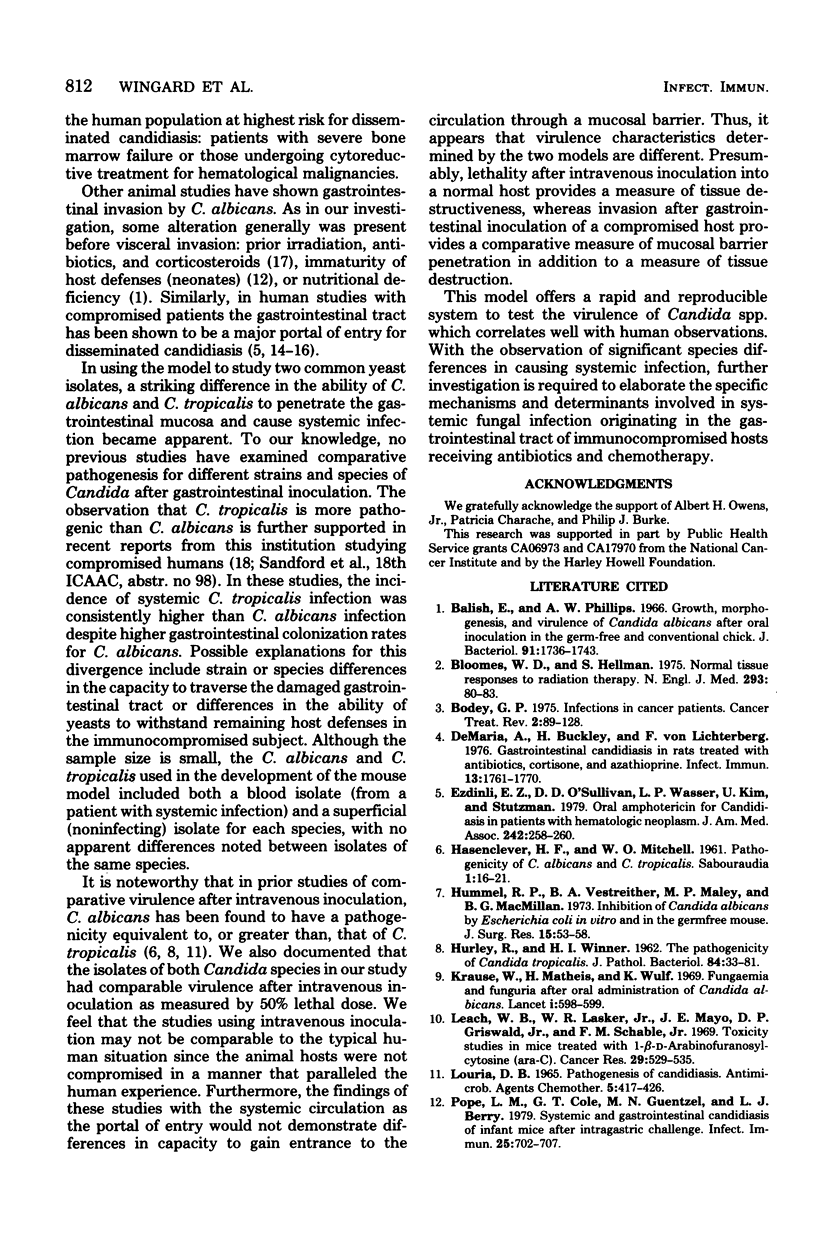
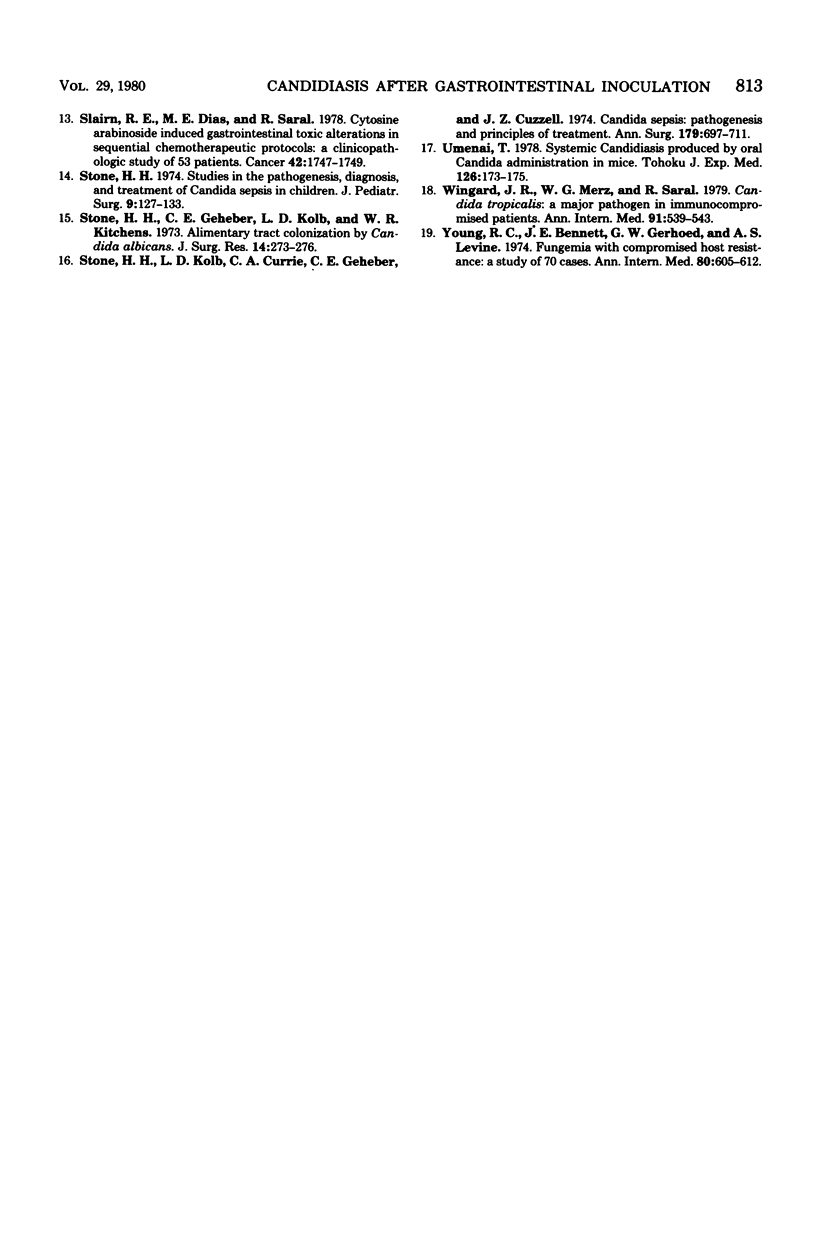
Images in this article
Selected References
These references are in PubMed. This may not be the complete list of references from this article.
- Balish E., Phillips A. W. Growth, morphogenesis, and virulence of Candida albicans after oral inoculation in the germ-free and conventional chick. J Bacteriol. 1966 May;91(5):1736–1743. doi: 10.1128/jb.91.5.1736-1743.1966. [DOI] [PMC free article] [PubMed] [Google Scholar]
- Bloomer W. D., Hellman S. Normal tissue responses to radiation therapy. N Engl J Med. 1975 Jul 10;293(2):80–83. doi: 10.1056/NEJM197507102930206. [DOI] [PubMed] [Google Scholar]
- Bodey G. P. Infections in cancer patients. Cancer Treat Rev. 1975 Jun;2(2):89–128. doi: 10.1016/s0305-7372(75)80005-3. [DOI] [PubMed] [Google Scholar]
- DeMaria A., Buckley H., von Lichtenberg F. Gastrointestinal candidiasis in rats treated with antibiotics, cortisone, and azathioprine. Infect Immun. 1976 Jun;13(6):1761–1770. doi: 10.1128/iai.13.6.1761-1770.1976. [DOI] [PMC free article] [PubMed] [Google Scholar]
- Ezdinli E. Z., O'Sullivan D. D., Wasser L. P., Kim U., Stutzman L. Oral amphotericin for candidiasis in patients with hematologic neoplasms. An autopsy study. JAMA. 1979 Jul 20;242(3):258–260. [PubMed] [Google Scholar]
- HASENCLEVER H. F., MITCHELL W. O. Pathogenicity of C. albicans and C. tropicalis. Sabouraudia. 1961 Jan;1:16–21. [PubMed] [Google Scholar]
- HURLEY R., WINNER H. I. The pathogenicity of Candida tropicalis. J Pathol Bacteriol. 1962 Jul;84:33–38. doi: 10.1002/path.1700840104. [DOI] [PubMed] [Google Scholar]
- Hummel R. P., Oestreicher E. J., Maley M. P., Macmillan B. G. Inhibition of Candida albicans by Escherichia coli in vitro and in the germfree mouse. J Surg Res. 1973 Jul;15(1):53–58. doi: 10.1016/0022-4804(73)90163-7. [DOI] [PubMed] [Google Scholar]
- Krause W., Matheis H., Wulf K. Fungaemia and funguria after oral administration of Candida albicans. Lancet. 1969 Mar 22;1(7595):598–599. doi: 10.1016/s0140-6736(69)91534-7. [DOI] [PubMed] [Google Scholar]
- Leach W. B., Laster W. R., Jr, Mayo J. G., Griswold D. P., Jr, Schabel F. M., Jr Toxicity studies in mice treated with 1-beta-D-arabinofuranosylcytosine (ara-C). Cancer Res. 1969 Mar;29(3):529–535. [PubMed] [Google Scholar]
- Louria D. B. Pathogenesis of candidiasis. Antimicrob Agents Chemother (Bethesda) 1965;5:417–426. [PubMed] [Google Scholar]
- Pope L. M., Cole G. T., Guentzel M. N., Berry L. J. Systemic and gastrointestinal candidiasis of infant mice after intragastric challenge. Infect Immun. 1979 Aug;25(2):702–707. doi: 10.1128/iai.25.2.702-707.1979. [DOI] [PMC free article] [PubMed] [Google Scholar]
- Slavin R. E., Dias M. A., Saral R. Cytosine arabinoside induced gastrointestinal toxic alterations in sequential chemotherapeutic protocols: a clinical-pathologic study of 33 patients. Cancer. 1978 Oct;42(4):1747–1759. doi: 10.1002/1097-0142(197810)42:4<1747::aid-cncr2820420413>3.0.co;2-t. [DOI] [PubMed] [Google Scholar]
- Stone H. H., Geheber C. E., Kolb L. D., Kitchens W. R. Alimentary tract colonization by Candida albicans. J Surg Res. 1973 Apr;14(4):273–276. doi: 10.1016/0022-4804(73)90028-0. [DOI] [PubMed] [Google Scholar]
- Stone H. H., Kolb L. D., Currie C. A., Geheber C. E., Cuzzell J. Z. Candida sepsis: pathogenesis and principles of treatments. Ann Surg. 1974 May;179(5):697–711. doi: 10.1097/00000658-197405000-00024. [DOI] [PMC free article] [PubMed] [Google Scholar]
- Stone H. H. Studies in the pathogenesis, diagnosis, and treatment of Candida sepsis in children. J Pediatr Surg. 1974 Feb;9(1):127–133. doi: 10.1016/0022-3468(74)90019-0. [DOI] [PubMed] [Google Scholar]
- Umenai T. Systemic candidiasis produced by oral Candida administration in mice. Tohoku J Exp Med. 1978 Oct;126(2):173–175. doi: 10.1620/tjem.126.173. [DOI] [PubMed] [Google Scholar]
- Wingard J. R., Merz W. G., Saral R. Candida tropicalis: a major pathogen in immunocompromised patients. Ann Intern Med. 1979 Oct;91(4):539–543. doi: 10.7326/0003-4819-91-4-539. [DOI] [PubMed] [Google Scholar]
- Young R. C., Bennett J. E., Geelhoed G. W., Levine A. S. Fungemia with compromised host resistance. A study of 70 cases. Ann Intern Med. 1974 May;80(5):605–612. doi: 10.7326/0003-4819-80-5-605. [DOI] [PubMed] [Google Scholar]



